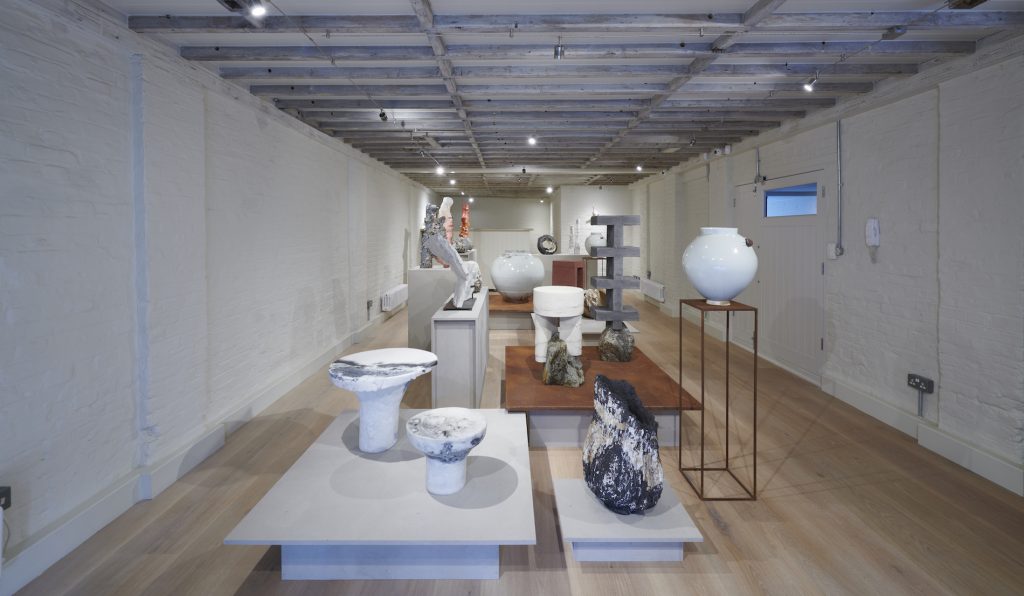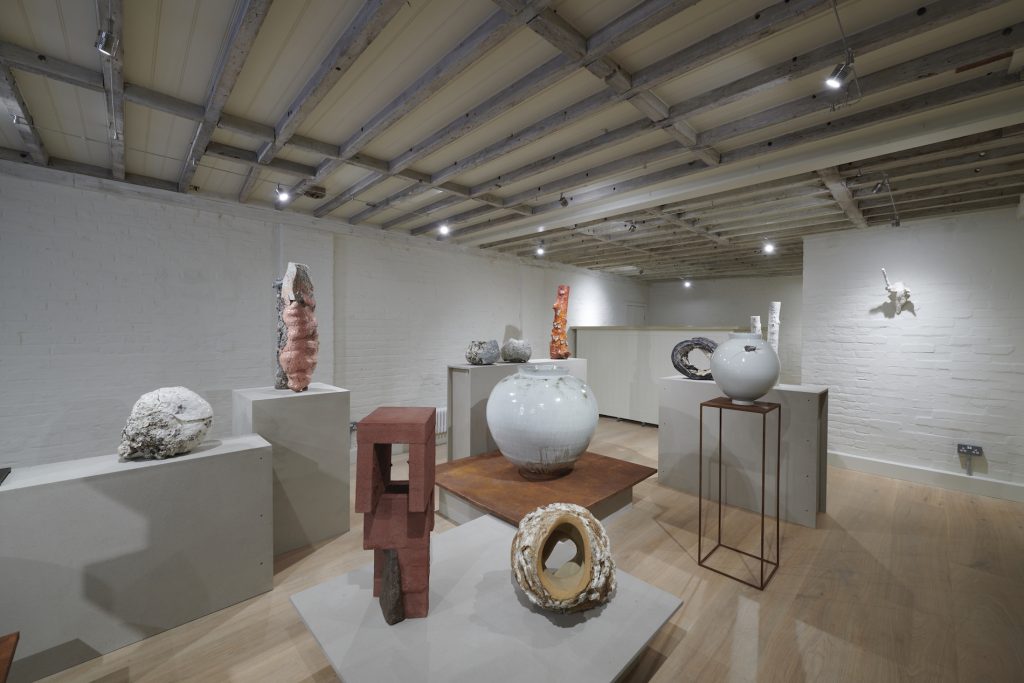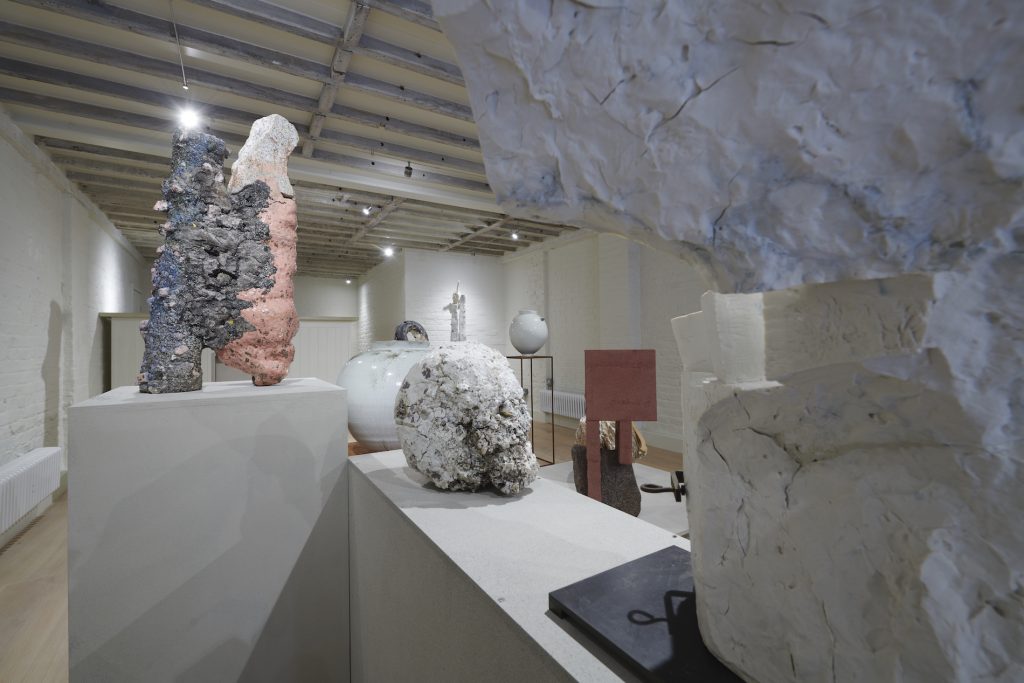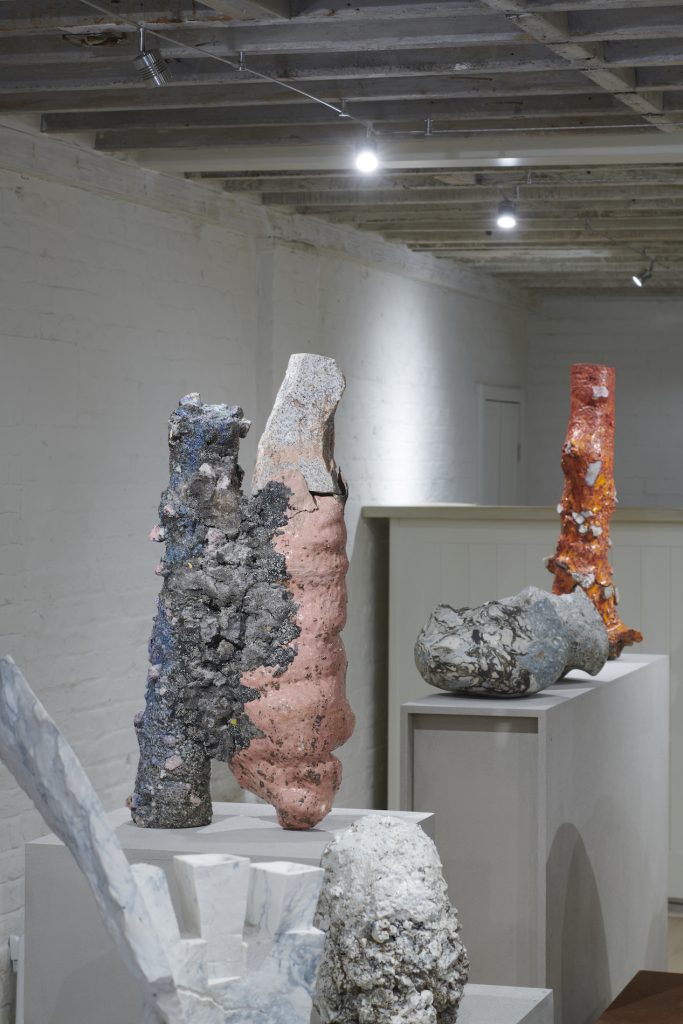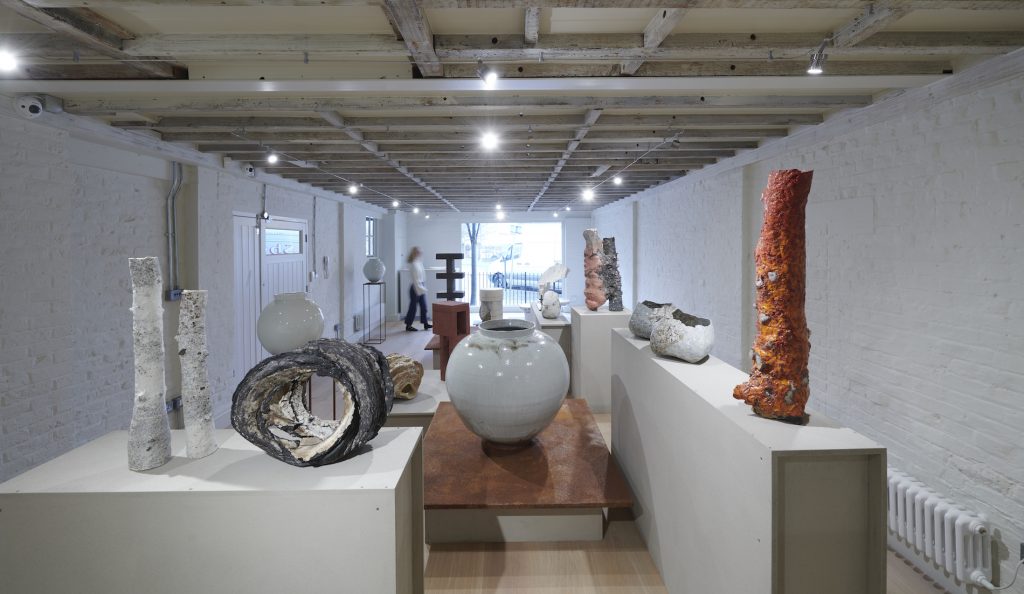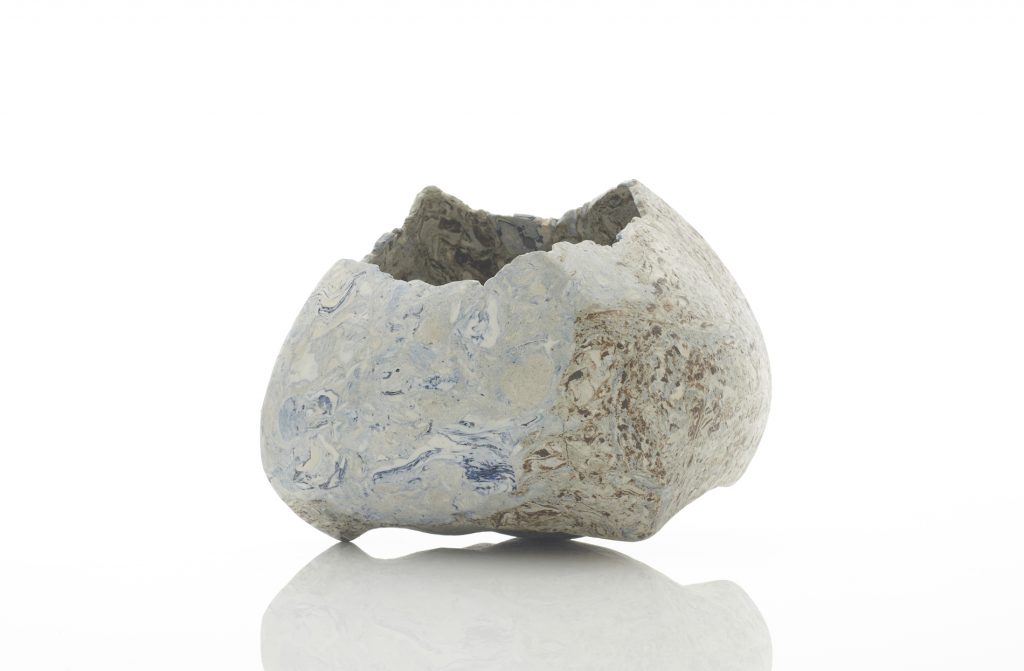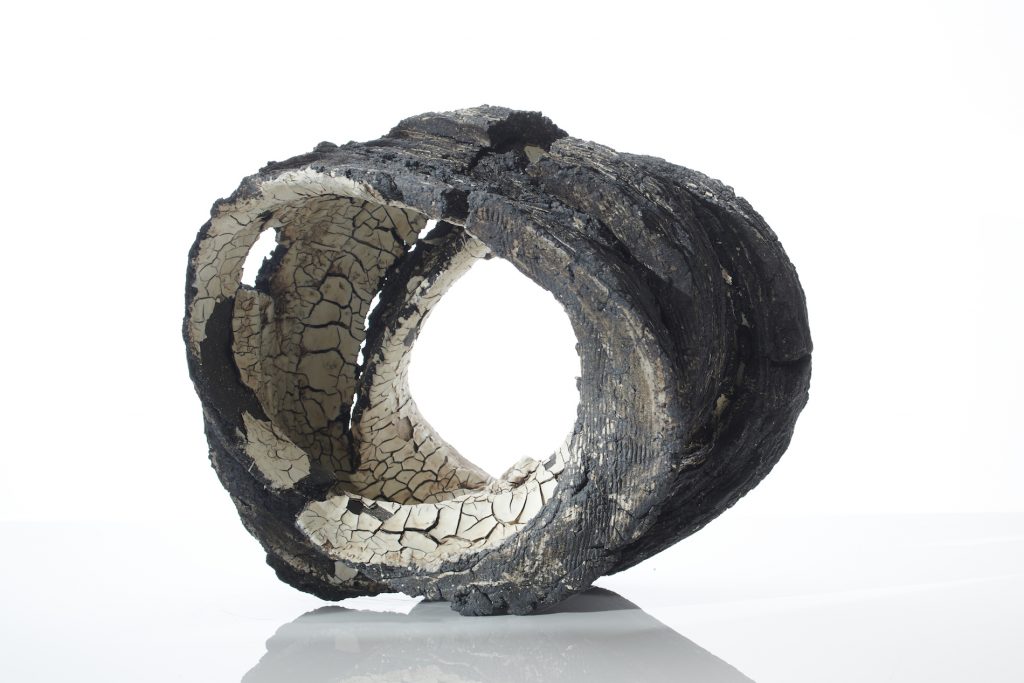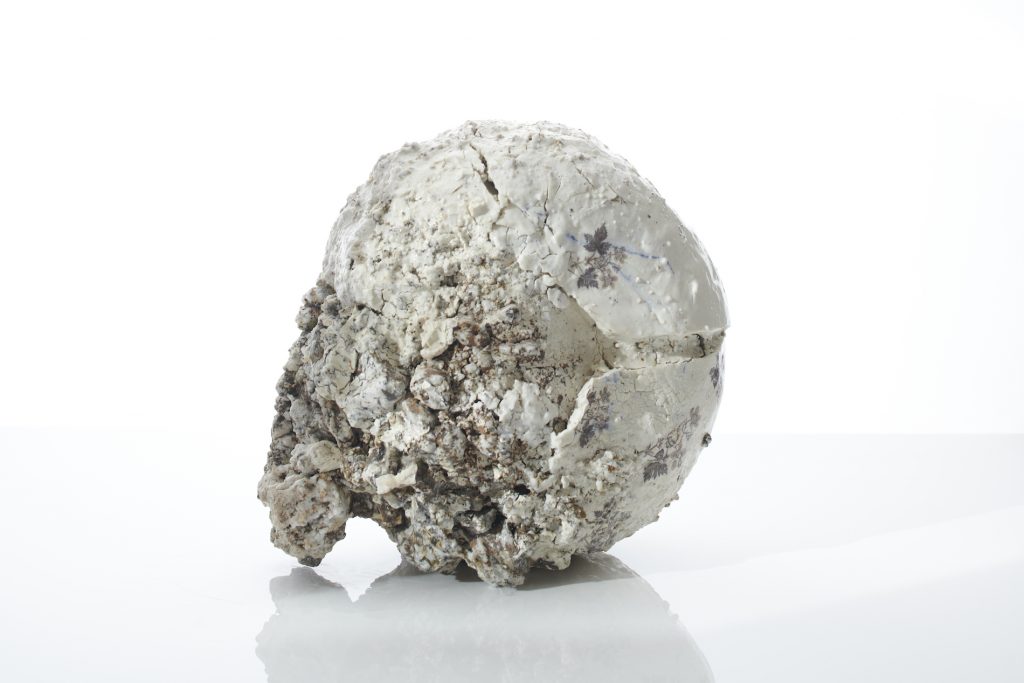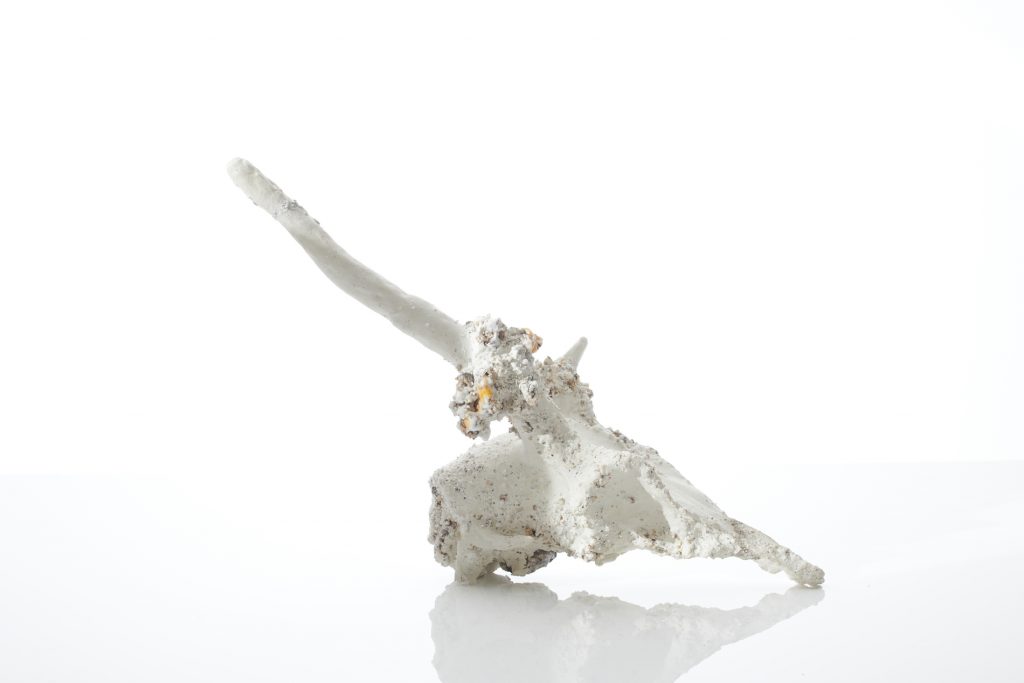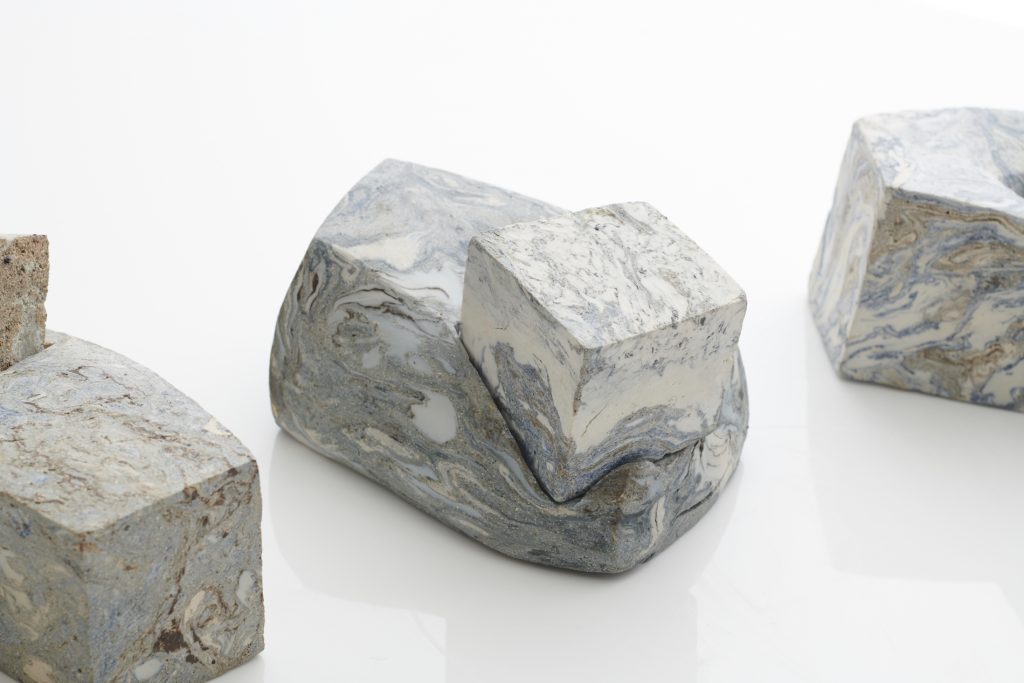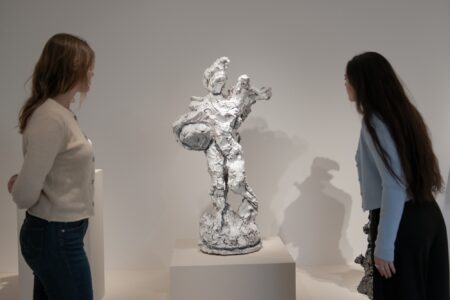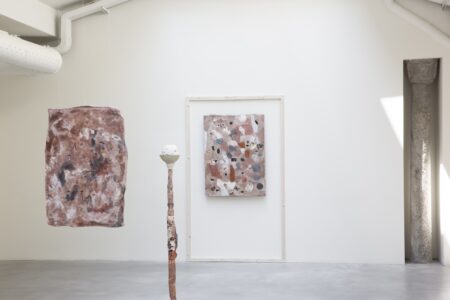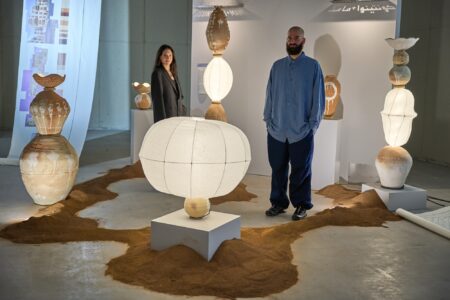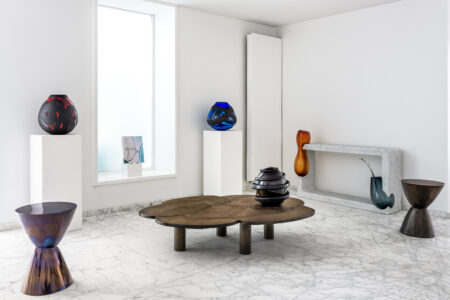
Sarah Myerscough Gallery: Tectonics
Sarah Myerscough Gallery presents Tectonics, a show focussing on ancient materials which speak of the nature of the planet and her crust.
“The earth’s masses surfaces in formations that have been eroded and transformed within the deep fabric of time. Limestone was not marble without immense compressions from volcanic reactions, nor clay deposits formed without the gradual chemical weathering of rocks”
The artists in this exhibition celebrate these ancient materials and exemplify the shifts in the methodologies, the sourcing, the reforming and informing of natural materials, shifts which are reinventing craft and design by incorporating the intricate interfaces of landscape, industry, chemistry, geology and ecology.
Ceramicists Adam Buick and Fernando Casasempere’s pieces can be read topographically, as documents of the landscape from which their clay has been sourced. Buick informs his work with a genealogy of deep and local mappings and with a poetic awareness of the very process that created clay: an erosion, a weathering. He incorporates stone and locally dug clay in his moon jars so that they have a connection with place, specifically his home country of Wales. This individuality and tension between materials not only creates intense and beautiful glazes but more poignantly they speak of the human condition and how landscape forms our perception of the world around us. Casasempere’s practice has historically encompassed waste materials from copper mining, a prevalent industry in his native Chile. Edmund de Waal has commented that the sculptor ‘works with a deep understanding of the specificity of materials’ which often appear as though they are in ‘flux between solidity and fluidity’, redolent of the Earth’s subterranean turmoil and constant metamorphosis.
Aneta Regel’s abstract forms similarly evoke the raw and powerful underground transmutations of the Earth. The artist as alchemist combines stoneware and porcelain clays with volcanic rock to create a composite in conflict with itself; each material fires at different temperatures and is therefore pushed to its limits in Regel’s kiln, testing their malleability and density, strengths and weaknesses.
The variegated forms and unbounded textural surfaces of Luke Fuller’s work are inspired by the parallel layers of rock strata built up over a period of time, which can be closely compared to Fuller’s process of compacting and pressing clay layer by layer into a mould. The artist seeks to represent our connection to the earth, reflecting upon clay as ‘one of the original products of recycling. From mountain top to riverbed, this natural material offers the chance to engage with the elemental earth and, through practice, build upon the traditions and lineage of human making.’
Collin Townsend Velkoff’s sculptural design pieces explore how our consciousness is derived from our relationship with materials, both natural and manmade. He explains that, ‘by using cement and anchoring forms to stone, I want to create a sense of familiarity and comfort. Through the manipulation of form, balance, and texture, I want my sculptures to convey a feeling of unease and tension which communicates our relationship with materials and our dependence on the environment.’ To do so, he has developed a specific sand-casting technique, allowing him to join cement with organic forms buried beneath sand, which he digs out by hand.
Roxane Lahidji, the only artist not to use a form of rock or clay as her primary material, has developed a technique to mimic the sculptural qualities of marble using salt. She uses the salt’s physical properties as a self-binding composite mixed with tree-resin to create strength and solidity, adding coal powder to the substance to produce layered strata of subtle colour. Lahidji’s invention is a sustainable design material which also draws our attention to the socially constructed concepts of value; salt, historically costly and now cheap, parodies the aesthetics of a sought-after luxury rock.
As a collection, the works in Tectonics demonstrate innovative methods of building with matter, reinventing the crafting process by engaging in new ways with natural products of earth and time, connecting us to our most primordial beginnings.
Sarah Myerscough founded her eponymous gallery in 1998. Myerscough is a leading specialist dealer in contemporary woodcraft and design. The gallery promotes formal and aesthetic innovations within the contemporary visual arts by breaking down boundaries between fine art, craft, and design. During the COVID-19 crisis, the Barnes gallery is temporarily closed, however opening by appointment.
Cover image: Roxane Lahidji, Marbled Salts White Jem Stool, Sarah Myerscough Gallery, Photo Credit Sylvain Deleu.
https://www.sarahmyerscough.com/
